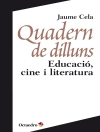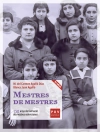This book explores the topic of using technology, both physical and digital, to motivate creative mathematical thinking among students who are not considered ‘mathematically advanced.’ The book reflects the authors’ experience of teaching mathematics to Canadian and American teacher candidates and supervising several field-based activities by the candidates. It consists of eight chapters and an Appendix which includes details of constructing computational learning environments.
Specifically, the book demonstrates how the appropriate use of technology in the teaching of mathematics can create conditions for the emergence of what may be called ‘collateral creativity, ’ a notion similar to Dewey’s notion of collateral learning. Just as collateral learning does not result from the immediate goal of the traditional curriculum, collateral creativity does not result from the immediate goal of traditional problem solving. Rather, mathematical creativity emerges as a collateral outcomeof thinking afforded by the use of technology. Furthermore, collateral creativity is an educative outcome of one’s learning experience with pedagogy that motivates students to ask questions about computer-generated or tactile-derived information and assists them in finding answers to their own or the teacher’s questions. This book intends to provide guidance to teachers for fostering collateral creativity in their classrooms.
قائمة المحتويات
Chapter 1: Theoretical foundation of collateral creativity.- Chapter 2: From additive decompositions of integers to probability experiments.- Chapter 3: From number sieves to difference equations.- Chapter 4: Prime numbers.- Chapter 5: From dividing shapes in equal parts to the Four-color theorem.- Chapter 6: From purchasing flowers to minimax mathematics.- Chapter 7: From comparing chances to algebraic inequalities.- Chapter 8: Recreational mathematics (8-Queens, Tower of Hanoi).- Chapter 9: Exploring unsolved problems (e.g., 4, 2, 1, sequence).- Chapter 10: The Golden Ratio.- Chapter 11: Monty Hall Dilemma.- Chapter 12: Playing with calendar.- Chapter 13: Egyptian fractions. Appendix. Bibliography. Index.
عن المؤلف
Sergei Abramovich is a professor at the State University of New York School of Education and Professional Studies. He is an author/co-author/editor of eleven books and 240 articles on mathematics education, differential equations, and control theory. His service to educational community includes two founding editor-in-chief appointments (Open Mathematical Education Notes, Advances in Educational Research and Evaluation) and membership on editorial boards of another six professional journals.
Viktor Freiman, Ph.D., is a full professor at Université de Moncton, NB, Canada, and teaches courses in elementary mathematics education, new trends in education, and talent development. His research interests are in challenging mathematics, creativity, interdisciplinary connections (STEAM), ICT literacy, computational thinking, and history of mathematics education. He is a co-editor of the Springer Series Mathematics Education in the Digital Era. He is the director of the Partnership Network Compe TI.CA (ICT competencies in the Atlantic Canada) and president of the International Group on Mathematical Creativity and Giftedness.












